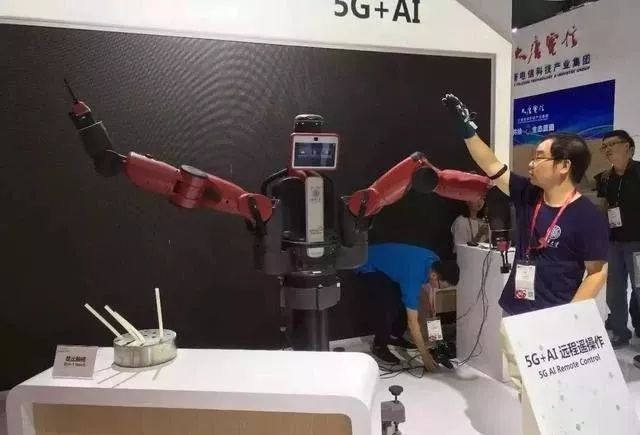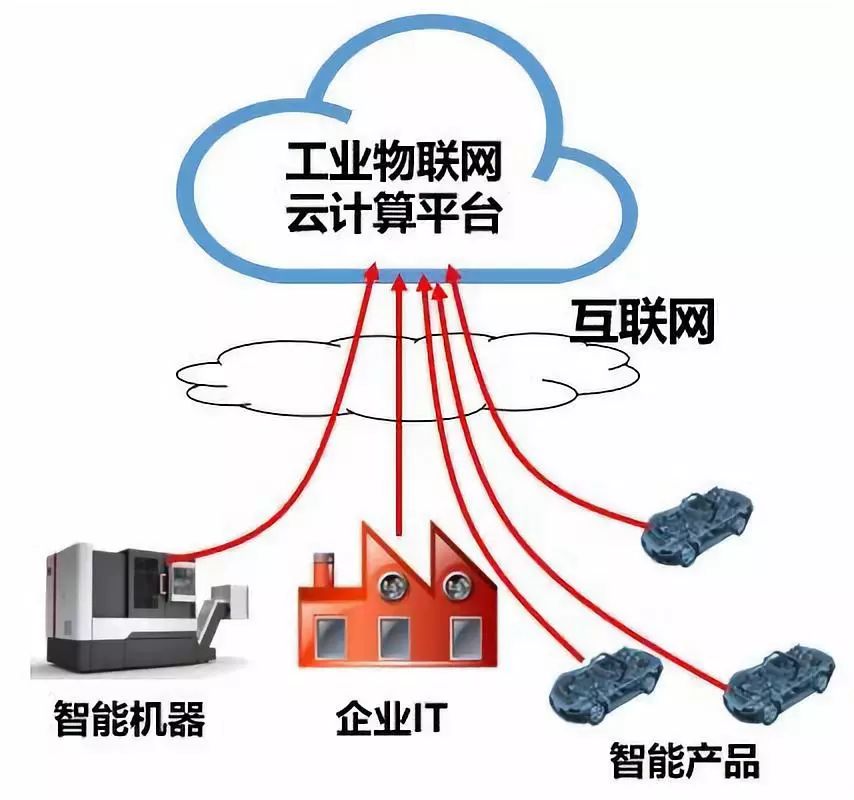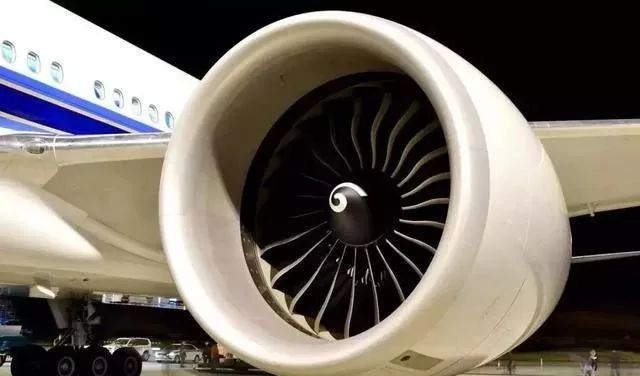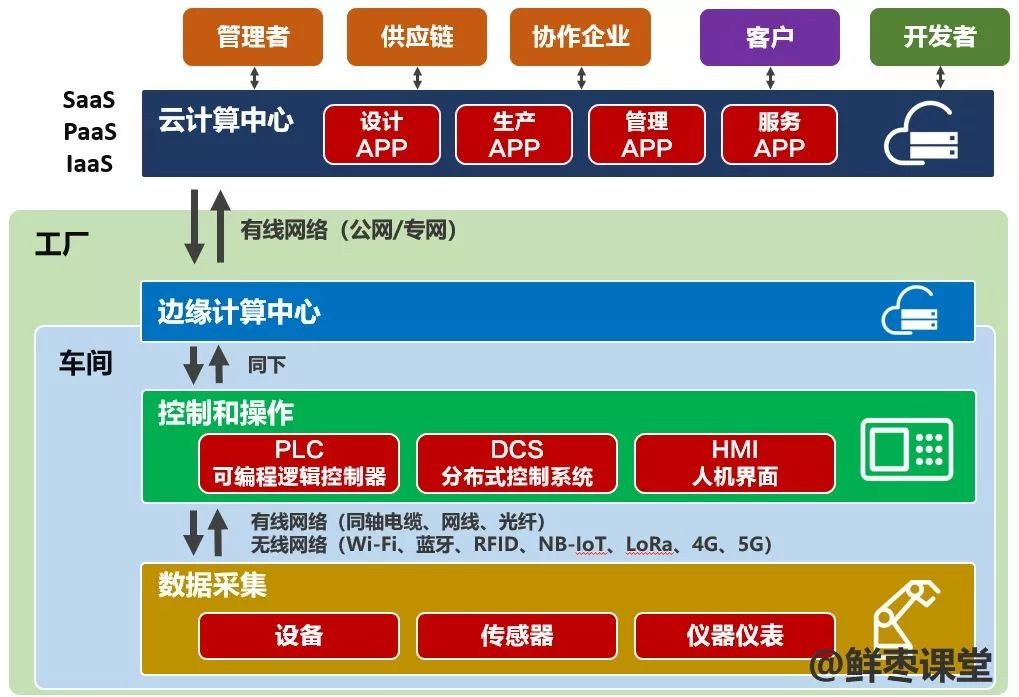

Author: Little Date King
Source: Fresh Date Classroom
Huaxiao Briefly Discusses
After sending out the article “Ten Years of Storm: The Past, Present, and Future of Cloud Computing” yesterday, many readers messaged saying they only understood cloud computing and wanted to know more about the Industrial Internet. So today, I have prepared this article to clarify the relationship between 5G, cloud computing, big data, artificial intelligence, and the Industrial Internet.
01
Industrial Internet and 5G
In 2012, when General Electric in the United States proposed the concept of “Industrial Internet”, they stated: “The Industrial Internet is about connecting people, data, and machines.”
In other words, the three elements of the Industrial Internet are people, data, and machines.
Now let’s enrich this concept:
The essence of the Industrial Internet is to connect devices, production lines, employees, factories, warehouses, suppliers, products, and customers closely through an open, global communication network platform, sharing various resource elements of the entire industrial production process, making it digital, networked, automated, and intelligent, thereby achieving efficiency improvements and cost reductions.
The relationship between 5G and the Industrial Internet mainly focuses on the access layer.
High connection speed, ultra-low network latency, massive terminal access, and high reliability are all advantages of 5G. These advantages will be very beneficial for 5G to replace existing factory IoT communication technologies, especially short-range communication technologies like Wi-Fi and Bluetooth.
Some scenarios that were previously limited by network access have become feasible with the support of 5G.
For example, high-precision robotic arm processing. If 5G is used to remotely control the robotic arm, the latency will be reduced to 1ms, which can well meet the requirements for processing accuracy.

5G Robot
Additionally, the ultra-high bandwidth of 5G will also play an irreplaceable role when collecting 4K/8K device monitoring images. Besides the access layer, 5G’s slicing and edge computing can also find good application scenarios in the Industrial Internet field.
02
Industrial Internet and Cloud Computing, Big Data, Artificial Intelligence
What is the relationship between cloud computing and the Industrial Internet?
When there is only one factory and a few devices, placing a few servers in the workshop, building a local area network, and finding a few engineers can manage and maintain this small industrial network.
This network is too small to be called an Industrial Internet; it can only be referred to as an industrial local area network.
But what if there are dozens of factories, hundreds of workshops, and tens of thousands of production devices? Clearly, at this point, cloud computing technology should be used.
Only by going to the cloud can there be powerful computing power, storage capacity, and network bandwidth to manage such a large system.

Only through cloud computing can more enterprise employees and managers access and use the Industrial Internet. It also allows developers greater space to design better applications.
Cloud computing can also provide interfaces for data sharing between enterprises, factories and supply chains, and factories and distributors. It can even provide interfaces between factories and end consumers, facilitating users’ personalized product customization.
Now let’s take a look at big data. We have been talking about data, but data and big data are two different things.
Everyone knows that the big data of consumer IoT is very large, such as shopping data, travel data, etc. However, in fact, the amount of data generated by the Industrial Internet far exceeds that of consumer IoT.
For example, the data generated by a Boeing aircraft engine within 30 minutes is 10TB, and our ordinary desktop computer with a 2TB hard drive would need 5 of them to store it.

Data is a gold mine, and the big data of the Industrial Internet is a super gold mine.
Through big data technology, all processes of production, manufacturing, logistics, etc., can be stored and analyzed to mine the data value.
What is the relationship between artificial intelligence and the Industrial Internet?
Actually, many years ago, when we played Red Alert and chose to battle against the computer, we were fighting against artificial intelligence. However, at that time, the artificial intelligence was just a very primitive and “weak” intelligence, following the fixed program processes set by the game developers, first building something, then building something else, and finally attacking you.
Today’s artificial intelligence learns faster, has more advanced algorithms, and has become AlphaGo; it is almost impossible to win against it.
Introducing artificial intelligence into industrial manufacturing essentially means letting artificial intelligence act as our agent to help us manage factories, manage the entire manufacturing process, including procurement, logistics, and sales processes.
With the continuous evolution of artificial intelligence, the Industrial Internet system will achieve self-perception of working conditions, self-learning of processes, self-execution of equipment, and self-organization of systems. This is the highest realm of intelligent manufacturing.
03
Current Development Status of the Industrial Internet
The Industrial Internet platform is the core of the Industrial Internet. In simple terms, it is the “operating system” of the Industrial Internet.
Just as Apple’s iOS system and Google’s Android system firmly control the consumer internet, whoever provides the best Industrial Internet “operating system” and has the most users will grasp the initiative in the development of the Industrial Internet.
However, despite the Industrial Internet having developed for so many years, there is still no platform that occupies an absolute leading position, nor has any platform achieved real success.
The reasons are interesting; the companies that can provide such powerful platforms must fall into two categories: either companies with strong industrial manufacturing capabilities or companies with strong information technology capabilities.
For example, General Electric in the United States and Siemens in Germany belong to the former category. The world’s first industrial cloud platform, Predix, was officially launched by General Electric (GE) in 2015. The second platform is MindSphere, opened by Siemens in April 2016.
Logically speaking, these companies are very strong, and the products they create are certainly very good. However, the Industrial Internet has a significant characteristic: personalization.
Each company produces different things, has different processes, different technologies, different equipment, different channels, and even different business models and supply chains.
Is it possible to create a universal platform?
To succeed, one must go through very in-depth analysis, modeling, and development.In other words, it requires high customization.
Industry insiders once said that in traditional consumer IoT platform development, the proportion of work in analyzing requirements, building models, and writing code is 2:3:5. The Industrial Internet platform, on the other hand, is 5:3:2.
In an Industrial Internet platform project, a lot of time is needed for scene and requirement analysis to understand how it actually operates. Can you just modify a universal platform and use it? Impossible!
Currently, the Industrial Internet platform is in a state of full-scale chaos. Large companies are doing it, small companies are doing it, and many large manufacturing enterprises are incubating independent subsidiaries that are thriving in their respective professional fields.
Some internet startups, leveraging their expertise, have also developed good platform products.
In this chaotic state, the global Industrial Internet platform market is growing rapidly.
According to research firm Markets and Markets, the global Industrial Internet platform market size was $2.57 billion in 2017 and is expected to grow to $13.82 billion by 2023.
The United States, Europe, and Asia-Pacific are currently the focal areas for the development of Industrial Internet platforms.
In the United States, representatives include giants like GE, Microsoft, Amazon, PTC, Rockwell, Cisco, Emerson, and Honeywell. In Europe, representatives include Siemens, ABB, Bosch, Schneider, SAP, and others.
China has even more, with companies like Aerospace Cloud Network, Haier, RootCloud, Baoxin, Sinopec Yinke, Yonyou, Suwei, Alibaba, Huawei, Inspur, Unisplendour, Dongfang Guoxin, and Jiyun, all of which are early platform development enterprises.

Domestic Industrial Internet Industry Technology System – China Academy of Information and Communications Technology
This chaotic battle will continue; who can emerge victorious will only be revealed by time.
04
Bottlenecks of the Industrial Internet
The future of the Industrial Internet is bright, but the road ahead is not smooth. Many issues and obstacles lie before it, such as the most critical data security issue.

Enterprises’ concerns about data security severely affect their willingness to go to the cloud. They fear that their core data cannot be adequately protected, and if leaked, the consequences would be disastrous.
Protecting data security requires platforms to have reliable technology and for enterprises themselves to have good hardware and software environments and management levels.
For many enterprises in our country, outdated infrastructure, limited funds and technology make it unrealistic to “quickly achieve” the Industrial Internet. As Academician Wu Hequan said, some enterprises cannot even achieve complete internal data sharing, let alone external sharing.
Moreover, the lack of Industrial Internet standards and insufficient training of ICT talents in enterprises are obstacles hindering the advancement of the Industrial Internet.
Not only in our country, but foreign promotion also faces numerous difficulties. For instance, General Electric recently sold part of its shares in GE Digital (the division responsible for Industrial Internet business, including the world’s first Industrial Internet platform, Predix) due to poor performance.
Therefore, promoting the development and popularization of the Industrial Internet is a common challenge faced by the whole world, and the road ahead is long and arduous.